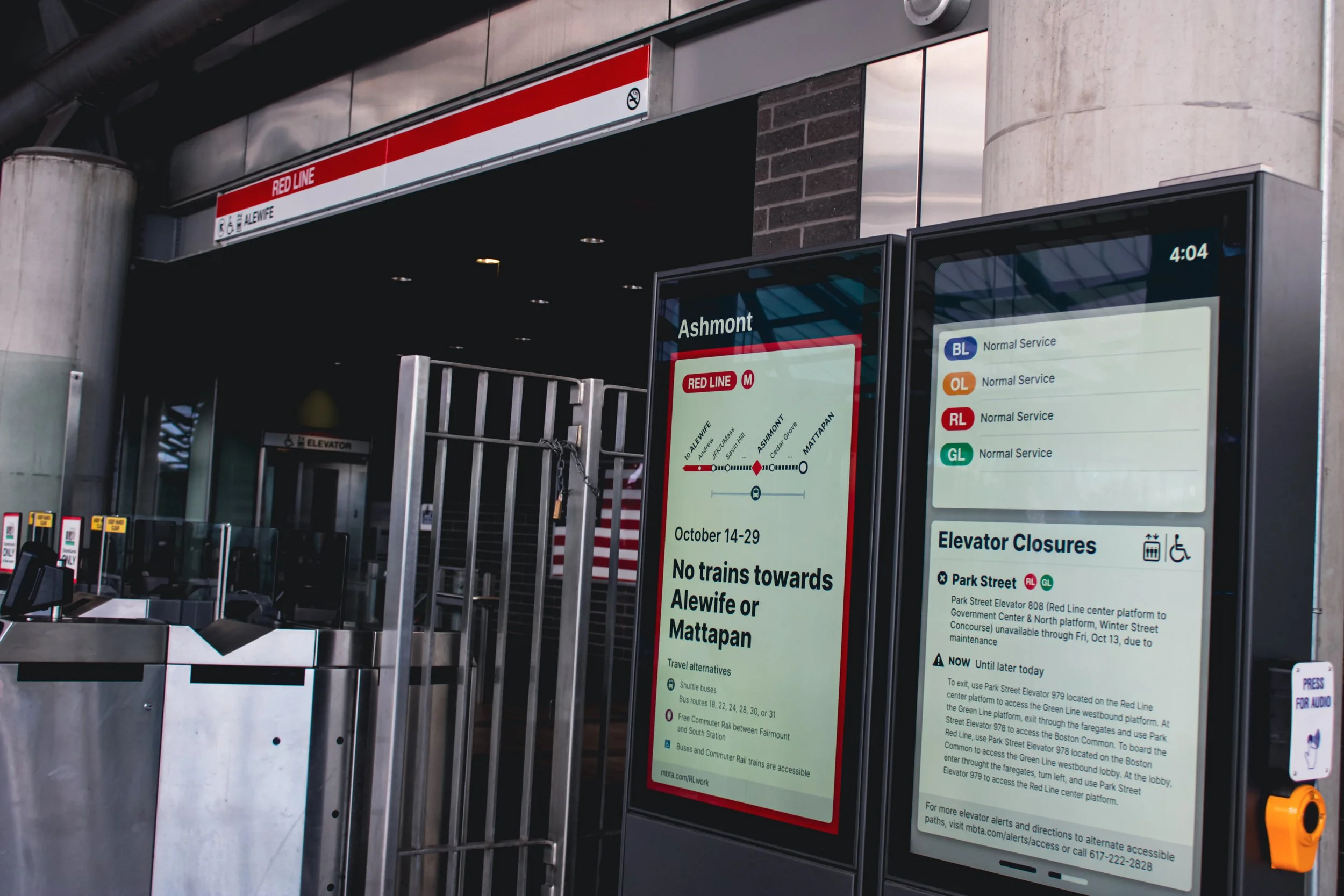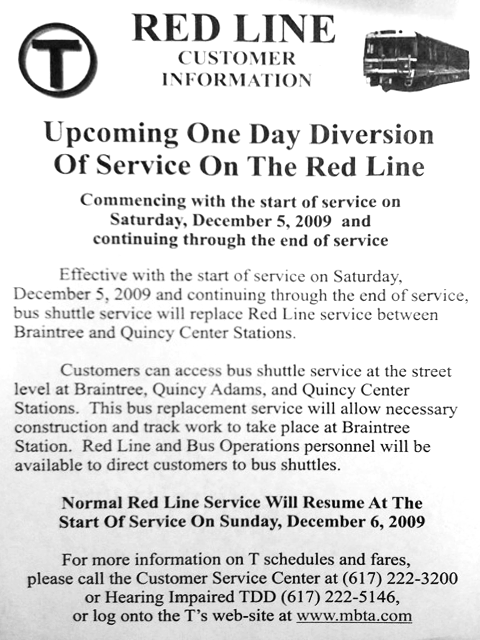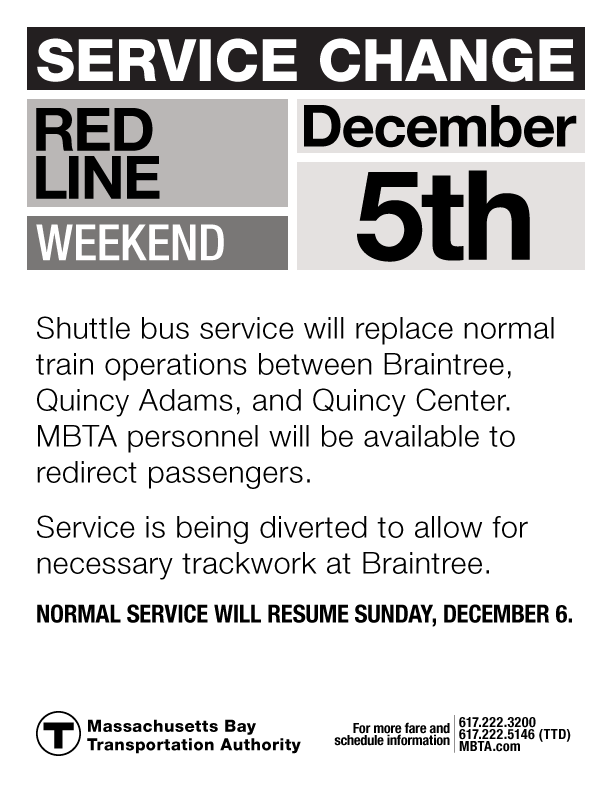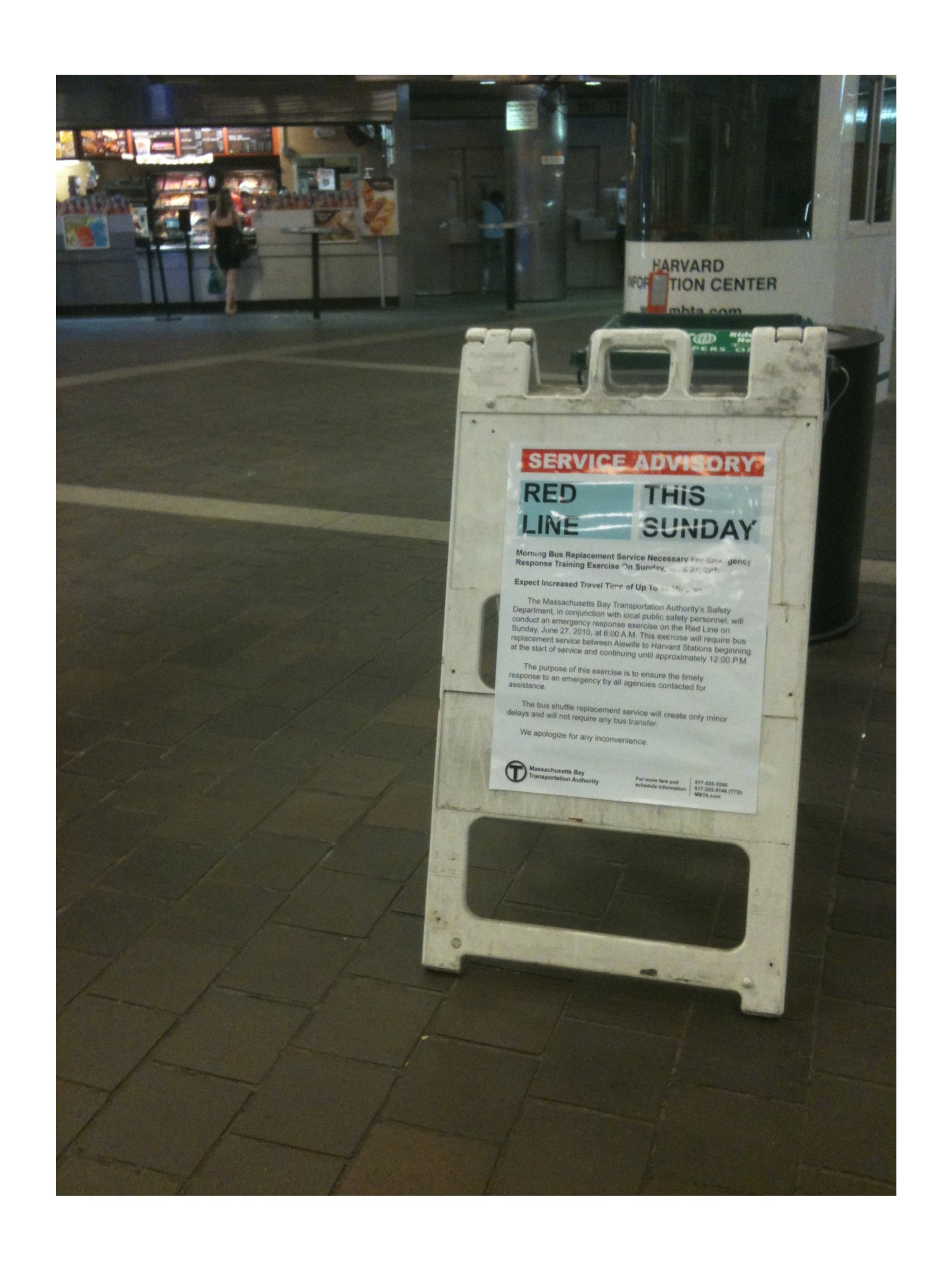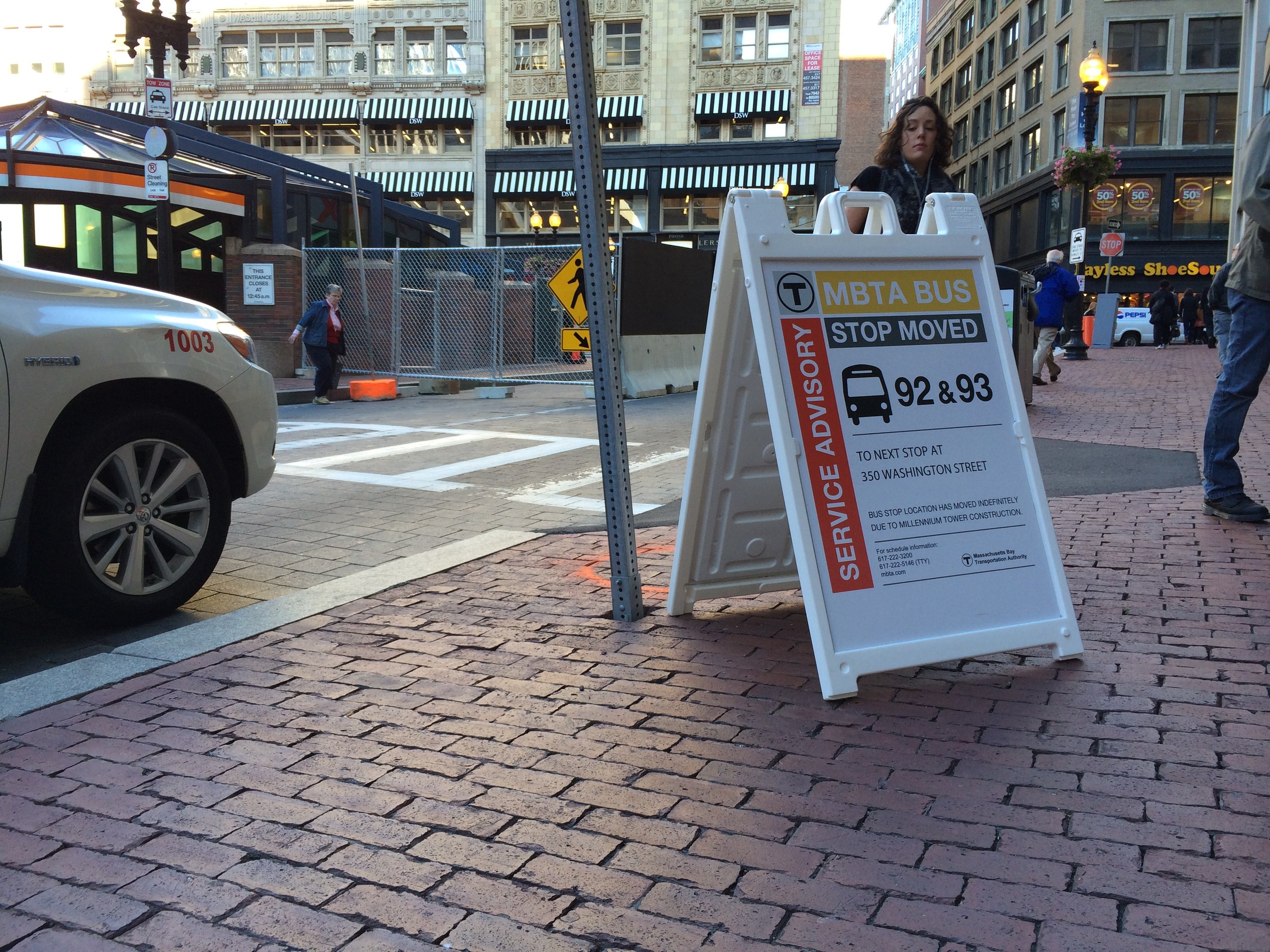
Media Statement: 2024 Diversion Schedule
TransitMatters applauds the MBTA and General Manager Eng for releasing a long-term diversion schedule for 2024. For too long, the T has communicated diversions to the public on an ad-hoc basis with limited warning.
BOSTON, November 9, 2023 — TransitMatters applauds the MBTA and General Manager Eng for releasing a long-term diversion schedule for 2024. For too long, the T has communicated diversions to the public on an ad-hoc basis with limited warning. Planning this work far in advance allows riders to make adjustments for when their trips are impacted. It also gives us at TransitMatters better confidence that the T is coordinating repairs and capital improvements to minimize disruption for riders.
While the T disrupts rail service, the MBTA needs to ensure replacement service is as seamless as possible. Communications about when and how service will be replaced or supplemented should happen early and often. The T should work with municipalities to ensure replacement bus service is fast and frequent and mitigate potential traffic issues along the route. Along parallel corridors, the T should increase Commuter Rail service and allow riders to board by showing their CharlieCard, explore free fares, and increase service on parallel and diversionary high-frequency bus routes.
The MBTA has reduced service on rapid transit for a year and a half. The Red Line is still only running 50% of pre-COVID service. Slow zones remain at or near record levels for any time before 2023. While these diversions are necessary to clear the existing backlog of speed restrictions, track defects occur as a part of regular wear and tear. Going forward, the MBTA should ensure it has the capacity to handle new track defects with minimal disruption to regular service.
If we want ridership to return to the pre-COVID levels, the T must improve speed restrictions and service levels as quickly as possible and run regular service as often as possible. Riders can learn to rely on the MBTA again, and we look forward to them doing so. We hope that this new plan builds on the success of the recent Red Line diversion and gives riders precious hours of their lives back.
For media inquiries, please e-mail media@transitmatters.org.
###
Banner Photo Credit: Brooke Winter
TransitMatters Analysis: Fast Work On Slow Zones
On October 30, the MBTA announced the successful completion of the shutdown and that “all speed restrictions that were in place prior to the shutdown have been alleviated in this area.” TransitMatters wondered: did the T, as Eng promised, clear this section of the system of slow zones?
The southbound section between JFK/UMass Station and Savin Hill Station remained the only segment with speed restrictions as of November 6, 2023.
BOSTON, November 6, 2023 — On August 24, the MBTA announced that it would shut down the Ashmont Branch of the Red Line and the Mattapan Line from October 14 to October 29 to expedite critical track work. The agency claimed it would otherwise take six months of night and weekend diversions to complete. MBTA General Manager Phillip Eng assured the public that 28 speed restrictions present on that section of the system would be lifted following the completion of the shutdown, resulting in faster travel times for the 40,000 riders traveling on the Ashmont Branch and 3,700 riders traveling on the Mattapan Line every day.
On October 30, the MBTA announced the successful completion of the shutdown and that “all speed restrictions that were in place prior to the shutdown have been alleviated in this area.” TransitMatters wondered: did the T, as Eng promised, clear this section of the system of slow zones?
While the MBTA maintains its own dashboard showing the state of slow zones across the system, our algorithm predates the T’s official reports. We visualize this using our Data Dashboard and proactively communicate both new and fixed slow zones to the public via our Slow Zone Bot, which posts to X, the platform formerly known as Twitter, as well as Mastodon. Using these tools, we analyzed the shutdown and the work done on the Ashmont Branch and Mattapan Line to answer our original question. Our analysis will focus on the Ashmont Branch.
PRE-SHUTDOWN
In October 2018, the average travel time between JFK/UMass Station (where the Ashmont and Braintree Branches of the Red Line diverge) and Ashmont Station was 9 minutes and 38 seconds southbound and 8 minutes and 33 seconds northbound, with no slow zones present on the branch.
By September 2023, this average travel time was up to 17 minutes and 6 seconds southbound and 15 minutes and 7 seconds northbound, almost double the average travel times. The entirety of the Ashmont Branch had a slow zone of some kind—northbound, southbound, and between all stations. It is worth pointing out that by the T’s numbers, this degradation of just the Ashmont Branch has resulted in a collective 390 days of slow time for riders every day, assuming a round trip for each of 40,000 daily riders. Roughly the same number of people were affected by the Sumner Tunnel shutdown. Despite this, the state government has generally paid more attention to the state of the Sumner Tunnel than that of the Red Line.
OCTOBER 30 (DAY ONE)
The first day the Ashmont Branch and Mattapan Line reopened, the MBTA claimed it removed all speed restrictions, improving travel times by over 10 minutes for Ashmont Branch and Mattapan Line riders. Our data shows that travel times between JFK/UMass and Ashmont took an average of 12 minutes and 26 seconds southbound and 10 minutes and 44 seconds northbound. Compared to pre-shutdown travel times, travel times improved by 4 minutes and 40 seconds southbound and 4 minutes 23 seconds northbound. Combined with improvements to the Mattapan Line, it is fair to say the MBTA did improve travel times by over 10 minutes for riders.
However, not all speed restrictions, or slow zones, were removed on Day One. Our Slow Zone Tracker shows that several speed restrictions remained on October 30. That’s not to say that the T was entirely incorrect on this claim. We have seen in previous shutdowns that slow zones can persist—due to, for example, track settling or operators acclimating to new track conditions. As a result, we wanted to continue our analysis for the remainder of the week to see if that was the case here.
OCTOBER 31
Day Two did see further improvements in travel times for the Ashmont Branch. Our data shows that travel between JFK/UMass and Ashmont took an average of 9 minutes and 48 seconds southbound and 9 minutes and 1 second northbound—a combined further travel time improvement of 4 minutes and 21 seconds. Our Slow Zone Tracker shows many of the slow zones that persisted on day one had disappeared by day two. The southbound section between JFK/UMass Station and Savin Hill Station remained the only segment with speed restrictions.
NOVEMBER 1-5
Days Three to Seven saw operations stabilize to fairly consistent travel times on both directions of the line, perhaps stemming from operators becoming more accustomed to the new speeds allowed for by the track work. Travel times between JFK/UMass and Ashmont took on average 8 minutes and 56 seconds southbound and 8 minutes northbound—an overall travel time improvement of 15 minutes 17 seconds for a round trip compared to September 2023 averages. A single slow zone between JFK/UMass and Savin Hill southbound has persisted. However, we should note: that zone has seen substantial speed improvement, and riders have still seen massive time savings on the branch.
CONCLUSIONS
Below is a table summarizing our day-to-day analysis of the performance of the Ashmont Branch in the week following the shutdown, with the October 2018 and September 2023 numbers included for comparison.
We can visualize the above table with the Data Dashboard:
Here is an overview of the line from the beginning of September to now, southbound.
And here is that same overview for the line northbound.
From all this data we can make several conclusions:
The shutdown resulted in the restoration of historic travel times. Red Line trains are finally moving along the Ashmont Branch as fast as they did in 2018, resulting in over a year of collective time saved by riders every day.
General Manager Eng was correct about his statement regarding travel times; however, somewhat missed the mark with his claim of immediate removal of all speed restrictions. While the majority of speed restrictions did dissipate during the week, several restrictions remained on the first day of reopening. Eng’s statement shows a step in the right direction for honest communication from the MBTA to the public. However, the T needs to work on transparency for the general public to regain trust in the MBTA and its leadership.
Shutdowns only work if they are properly planned, communicated, and executed. Last year, the MBTA announced the month-long Orange Line shutdown with barely two weeks of notice for riders and produced disappointing results. Already, the Ashmont Branch and Mattapan Line shutdown has yielded more positive feedback, proving these shutdowns can work if you give riders adequate time to prepare, viable alternative forms of transportation, and, most importantly, tangible results to show for the inconvenience.
We applaud the MBTA for the measures they took to ease the pain of this shutdown for riders. The agency created a tailored Riders’ Guide to help riders find alternative travel options, and allowed riders to show their CharlieCard to ride free on the Fairmount Line, a line that TransitMatters has identified as a high-priority candidate for electrification and conversion to a Regional Rail model. We hope the popularity of the Fairmount Line as an alternative during this shutdown encourages the state legislature and MBTA to prioritize those enhancements to that line and continue using Commuter Rail alternatives during future shutdowns.
At JFK/UMass Station, the T utilized the extended closure to install new floors, apply fresh paint, and deep clean. Continued efforts to improve stations helps enhance the rider experience, which is key to retaining riders during extended diversions. While riders can feel the work done through a faster ride, riders need to see the work as well.
Ultimately, TransitMatters would like to see the MBTA continue with similar expedited closures to alleviate all slow zones system-wide. With the exciting success of the Ashmont Branch and Mattapan Line shutdown, the MBTA should promptly create and release a strategy and calendar of future diversions intended to fix slow zones.
For media inquiries, please e-mail media@transitmatters.org.
###
Banner Photo Credit: Brooke Winter
Celebrating 10 Years Of Advocacy: TransitMatters' Guerrilla Poster Campaign
For the next 6 weeks, we will be highlighting landmark moments in our organization’s history so far. First up: Our guerrilla diversion poster campaign, which inspired the T’s current diversion signage.
In December 2009, our founder, Marc Ebuña, came across a Red Line service advisory lying face-down on the floor. This advisory was from a "seat drop," which was one of the ways the T used to communicate with riders about service advisories. Seat drops were not effective. They often ended up on the floor, content side down. Seat drops could not communicate a message to an entire train car, let alone every rider.
The Red Line service advisory Marc found was poorly designed and written more like a press release than an alert. It had too much text, few visual cues highlighting the most important information, and poor branding, making it look unofficial.
We redesigned it, taking a page from the New York City Subway’s advisories at the time. We pulled key information into a high-contrast header, edited down the text significantly, and added the T’s official branding with contact information.
Our redesign posted above a service advisory from the T.
We offered the redesign to the MBTA and received a prompt response from the Deputy Director of Subway Operations. He referred us to the Red Line Chief of Operations, to follow up on design issues. We never got that follow-up.
In March of 2010, the Director of Innovation and Special Projects at MassDOT reached out via the MassDOT Developers Twitter account to invite us to a stakeholder roundtable with the incoming MBTA General Manager, Rich Davey. Here, we mentioned to the incoming General Manager our previous attempts to improve service advisories with staff. He encouraged us to post our designs the next time we saw diversion posters.
Early May 2010, we posted the redesigns. This seemed to push through the internal inertia required to get this prioritized. By mid-June 2010, the T was officially starting to pilot the new signs! Designs continued to evolve internally after then.
Categories
- Children (1)
- Diversions (1)
- Olympics (1)
- MAPC (2)
- Red–Blue Connector (2)
- Urban Design (3)
- Bus (4)
- Fares (4)
- Late Night Service (4)
- MBTA ROC (4)
- Silver Line (4)
- Snow (5)
- Blue Line (8)
- Emergency (8)
- Orange Line (8)
- Public Comment (8)
- Maintenance (9)
- Operations (9)
- Signage (9)
- Fare Collection (10)
- Labs (11)
- Safety (11)
- Planning (12)
- Communication (14)
- MBCR (14)
- MassDOT (14)
- Green Line (16)
- History & Culture (16)
- Red Line (18)
- MBTA Bus (21)
- Commuter Rail (24)
- Advocacy (26)
- Capital Construction (28)
- Politics (30)
- Podcast (35)
- News (38)
- Media (40)
- Funding (42)
- Statements (50)
- MBTA (57)


